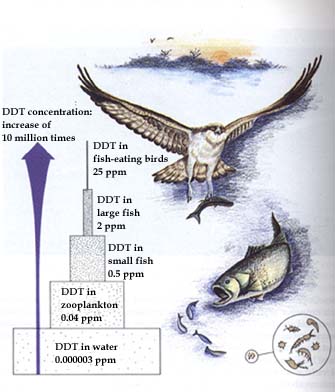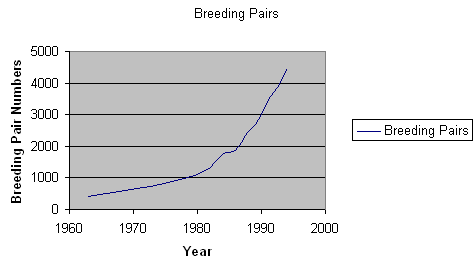
Protecting an Icon:
The bald eagle has been under increased risk since the arrival of white settlers into North America. The eagles were considered to be a nuisance for farmers, who complained about the eagle killing their chickens and livestock, and they were of little concern to loggers, who destroyed thousands of acres of forest and homes for the eagle. Estimates put the number of Bald Eagles in America to be near 500,000 at one point in history, but due to the increased threat to the eagle population, number plummeted.
One shocking example of Bald Eagle removal was in Alaska, where eagles were targeted for their perceived negative effects to the salmon fishing industry. In 35 years time, an estimated 128,000 eagles were killed in accordance to a bounty system that was in place by the Alaskan government. The decreasing number of water fowl and other birds which the bald eagle used as prey occurred at the same time, and also adversely affected the bald eagle population.
Finally, in the 1940s, the Bald Eagle gained
much needed protection from the federal government, with the passage of the Bald
Eagle Protection Act. The law prohibited the "taking, possession, sale,
purchase, barter, offer to sell, purchase or barter, transport, export or
import, of any bald eagle, alive or dead, including any part, nest, or egg,
unless allowed by permit (FWS)." Alaska was exempt from this act until 1952,
when studies showed that Bald Eagles did not significantly affect salmon
numbers, as was previously thought.

The Bald Eagle Protection Act significantly slowed the decline of the eagle due to hunting and other human actions. Unfortunately, post-World War II spraying of the pesticide DDT, used primarily to kill mosquitoes and stop the spread of malaria, has terrible unforeseen side effects on the Bald Eagle. As DDT was washed into the water system, it worked it way up the food chain. As you can see in the image to the right, very small levels of DDT in the water can increase millions of times in potency as it works its way though the dynamics of the food chain.
Bald Eagle reproduction rates were drastically affected. Not because eagles were adult eagles were dying, but the DDT contamination caused thinning of the egg shells. Thinner egg shells led to increased egg breakage and therefore a decline in bald eagle numbers. DDT use continued until 1972, until it was banned by the federal government.
In the 1960s with the passage of Endangered Species Preservation Act, the bald eagle was listed as endangered below the 40th parallel. The eagles in Alaska and Canada were not considered to be threatened and therefore were not included in the act.
The 1973 Endangered Species Act allowed for and defines two categories which organisms can be classified under.
- Endangered - "a species as a species that is in danger of extinction throughout all or a significant portion of its range (FWS)."
- Threatened - "any species that is likely to become an endangered species within the foreseeable future throughout all or a significant portion of its range (FWS)."
| In 1974 the Bald Eagle was listed as endangered in the lower 48 states with exception of Wisconsin, Michigan, Oregon, and Washington. Due to these protections and increased actions to restore Bald Eagle population, the number of bald eagles has increased dramatically. Current estimates put the total number of eagles at 100,000. In 1995 Bald Eagle were officially reclassified to "threatened" status in the lower 48 states. |
|
Current estimates put the total number of eagles at 100,000 has been greatly
